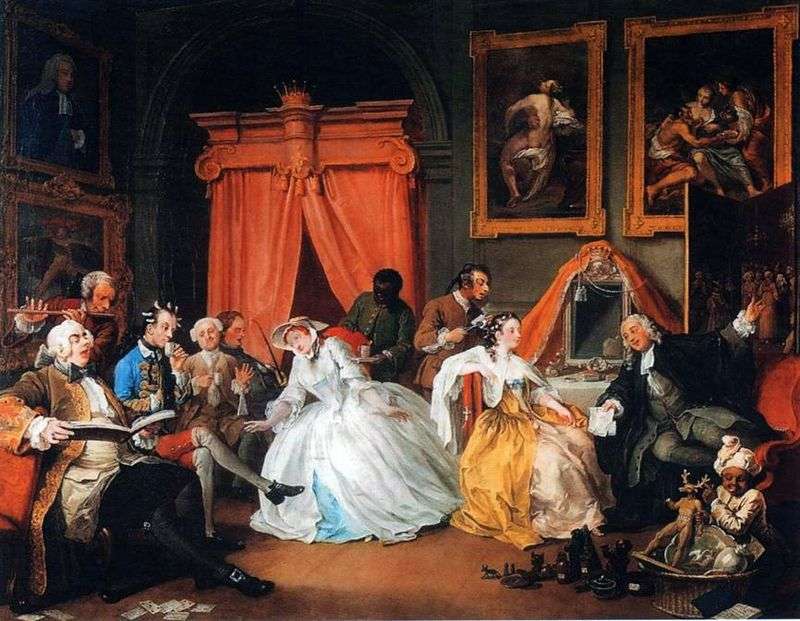
The presented masterpiece of Hogarth – the fourth picture of six, included in the series “Fashionable marriage”, where the artist explores modern mores by the example of marriage of convenience, common among aristocrats and rich merchants. Possessing a sharp sense of humor, Hogarth knew how to infect a spectator. In this series, the artist sarcastically talks about what happened to the vainglorious lord, his wife and silently attorney Silvertang. In the center of the picture is the countess, who receives early visitors during her morning toilet. She does not take her eyes off the lawyer, while her friend is fascinated by the opera singer.
Two pompous guests enjoy hot chocolate, and the fat guest sleeps peacefully in the armchair. Seemingly comical and innocuous, this scene is full of secret hints, foreshadowing the approach of a great disaster. A brilliant portraitist, William Hogarth surprisingly painted the faces of his characters, each endowed with a character, a comic look. In the painting “Boudoir of the Countess” two primly gentlemen listen to the flutist and the operatic castrato. One of the gentlemen sits in paper wallets, which, on a dark background, look like small horns. This gentleman did not wake up properly, so he lazily brings a cup of hot chocolate to his lips.
A guest is sitting in a wig with a black sticker on his face that covers the syphilitic ulcer. He wryly shows that he is listening to the singer, and even tries to conduct it lightly. Behind this pair was a fat pink-cheeked gentleman. He peacefully snores, sitting with his mouth open. In his hand he holds a stack, which allows him to guess in him an agricultural squire, a great lover of a drink and a snack, but unable to withstand the boredom that usually prevails in this morning reception of the countess. By the way, the sleeper might well be the husband of a woman in white, bowed before the singer. Hogarth emphasizes with all the picturesque means that his painting depicts certain types seen in society, and not borrowed from a lower genre – caricatures.
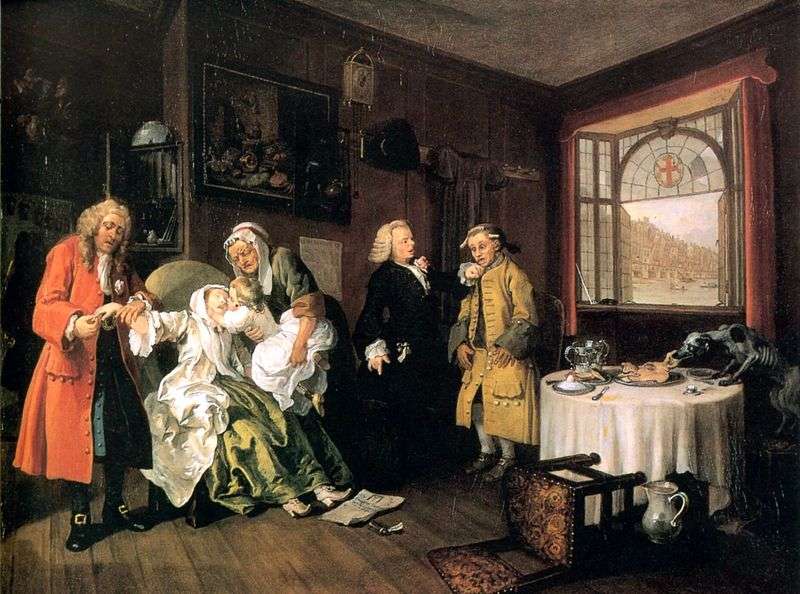 The Countess’s Death by William Hogarth
The Countess’s Death by William Hogarth Marriage a la Mode by William Hogarth
Marriage a la Mode by William Hogarth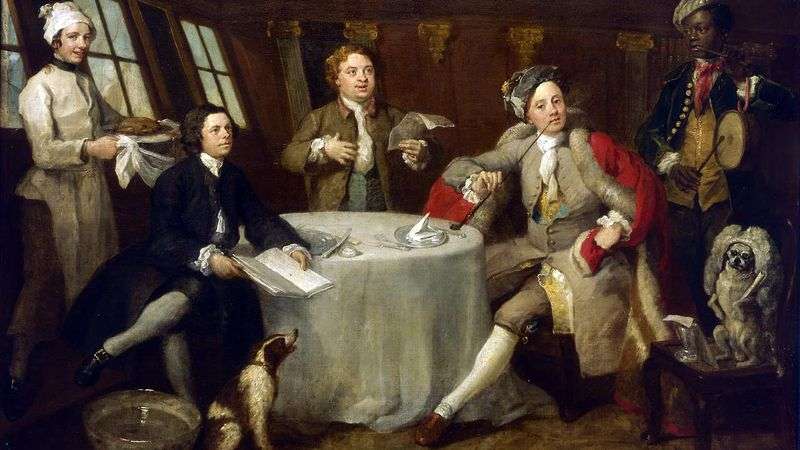 Captain Lord George Graham in his cabin by William Hogarth
Captain Lord George Graham in his cabin by William Hogarth The marriage contract by William Hogarth
The marriage contract by William Hogarth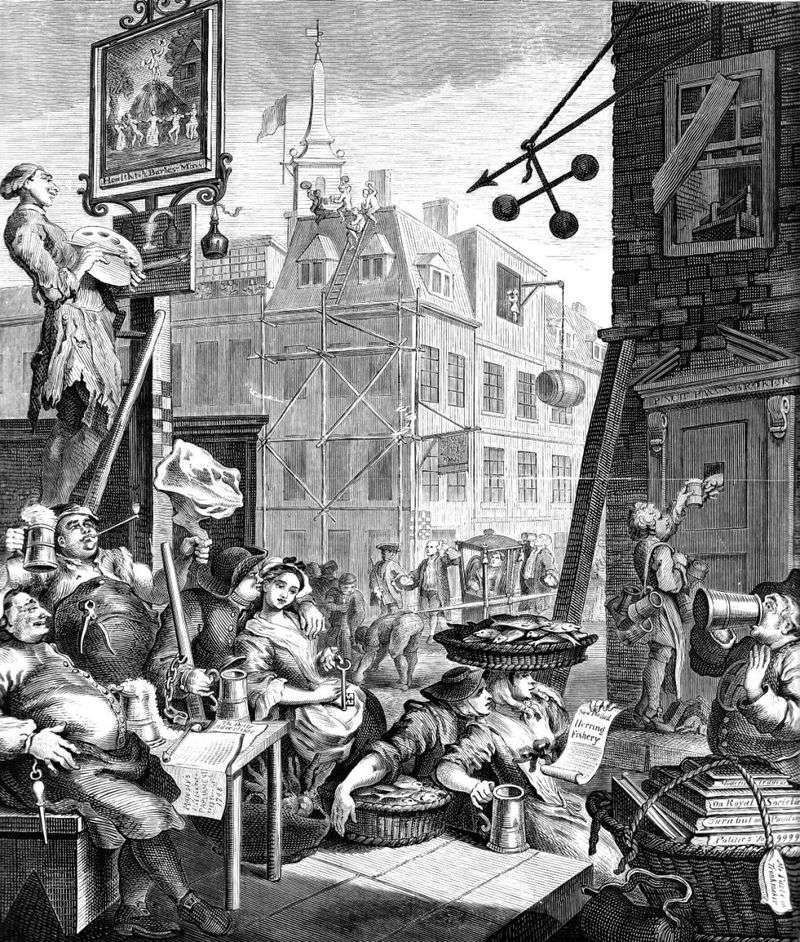 Piva Street by William Hogarth
Piva Street by William Hogarth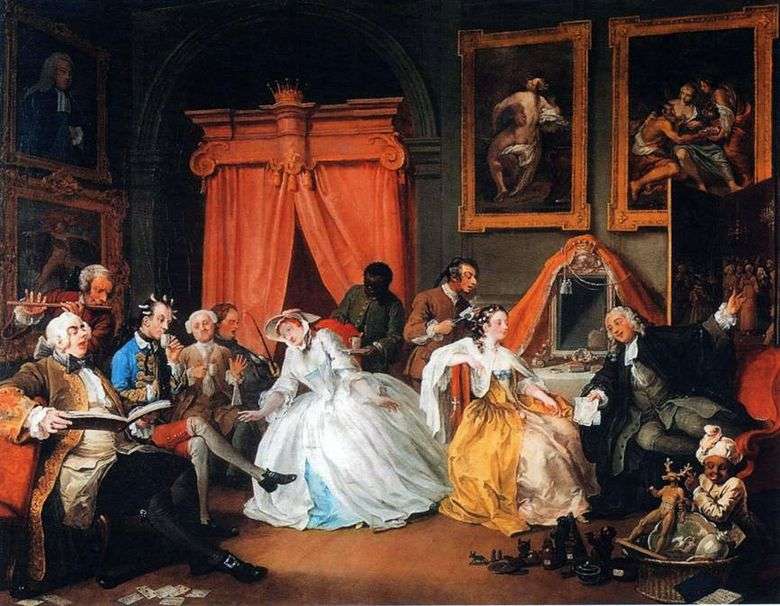 Condesa Boudoir – William Hogarth
Condesa Boudoir – William Hogarth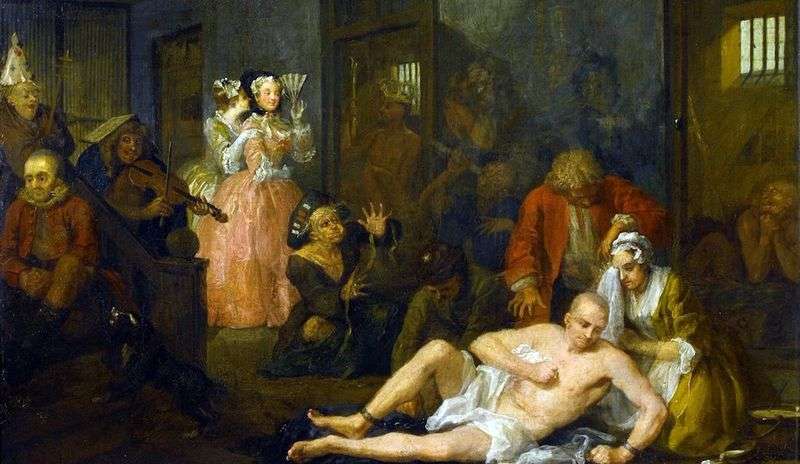 Career Mota. Mot in Bedlam by William Hogarth
Career Mota. Mot in Bedlam by William Hogarth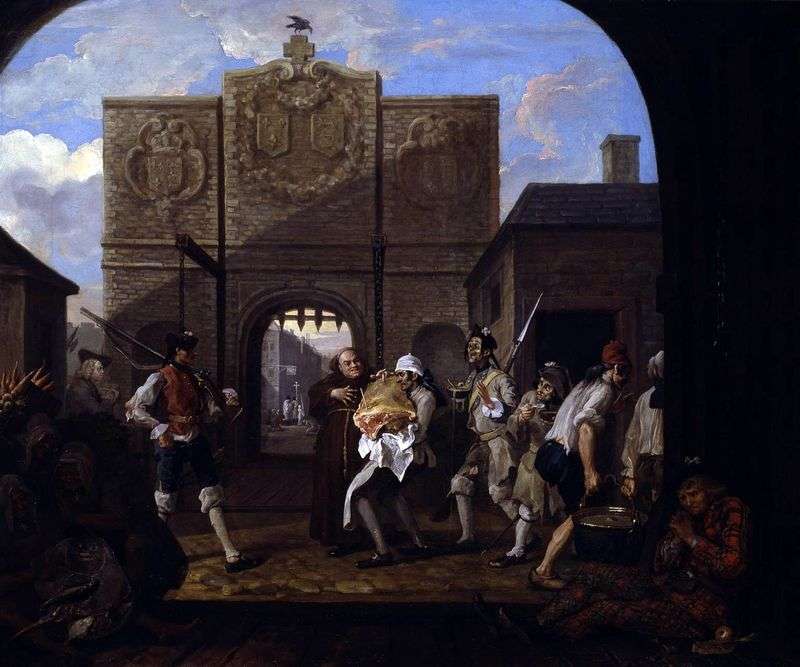 Gates of Calais, or O, roast beef of old England by William Hogarth
Gates of Calais, or O, roast beef of old England by William Hogarth